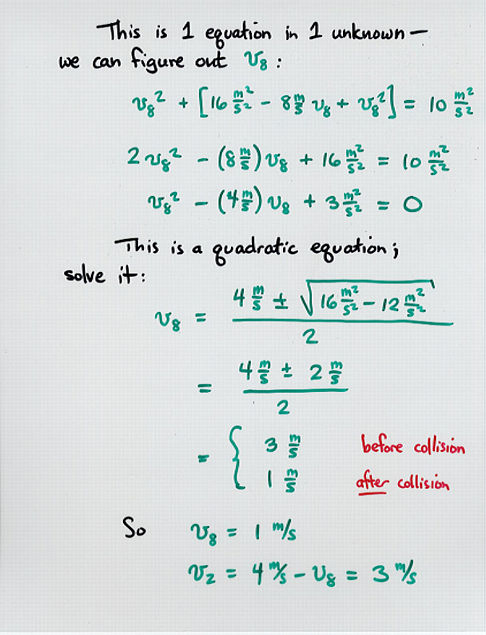 Topic Notes · Total momentum and total energy are conserved in collisions. · Elastic collision: collision where no kinetic energy is lost · Inelastic collision.
Topic Notes · Total momentum and total energy are conserved in collisions. · Elastic collision: collision where no kinetic energy is lost · Inelastic collision.
Elastic vs inelastic collision

Collision · Elastic Collision: In this type of collision both the momentum and kinetic energy of the system are conserved. In such collisions the forces.
Elastic and Inelastic Collisions
Collisions: Elastic and Inelastic · Completely inelastic collisions involve objects which stick together afterwards. · Partially inelastic collisions involve.
The elastic collision shows a longer interaction time and a smaller maximum force. The inelastic collision (the graph on the bottom) displayed some interesting. Momentum - Elastic vs. Inelastic Collision There are two balls, one "happy" (demonstrates a good elastic collision) one "sad" (approximately demonstrates an.
Elastic and inelastic collisions As in all collisions, momentum is conserved in this example. But calculations comparing kinetic energy before and after the. A high speed car collision is an inelastic collision. In the above example, if you calculated the momentum of the cars before the collision and added it. The elastic collision is the type of collision that occurs when the kinetic energy is not converted to any form of energy, whereas the inelastic collision is a.
Elastic vs inelastic collision - The elastic collision is the type of collision that occurs when the kinetic energy is not converted to any form of energy, whereas the inelastic collision is a.
Elastic vs inelastic collision - Elastic and inelastic collisions As in all collisions, momentum is conserved in this example. But calculations comparing kinetic energy before and after the.
VIDEO
Differentiating Between Elastic and Inelastic Collisions - Physics in Motion Topic Notes · Total momentum and total energy are conserved in collisions. · Elastic collision: collision where no kinetic energy is lost · Inelastic collision.
Topic Notes · Total momentum and total energy are conserved in collisions. · Elastic collision: collision where no kinetic energy is lost · Inelastic collision.
I apologise, I can help nothing, but it is assured, that to you will help to find the correct decision.
I agree with you, thanks for an explanation. As always all ingenious is simple.
It absolutely not agree
You, casually, not the expert?
You are not right. I am assured. I can prove it. Write to me in PM, we will talk.